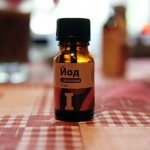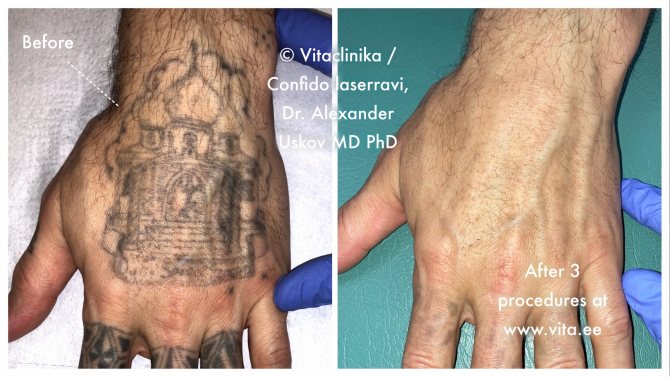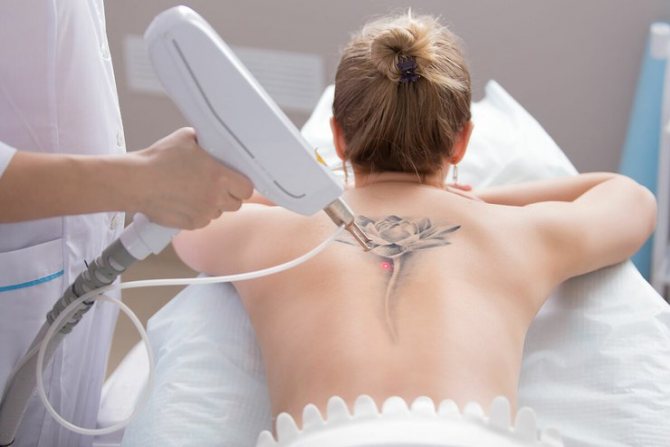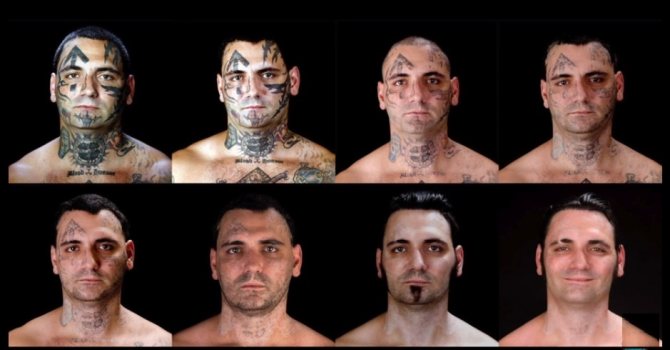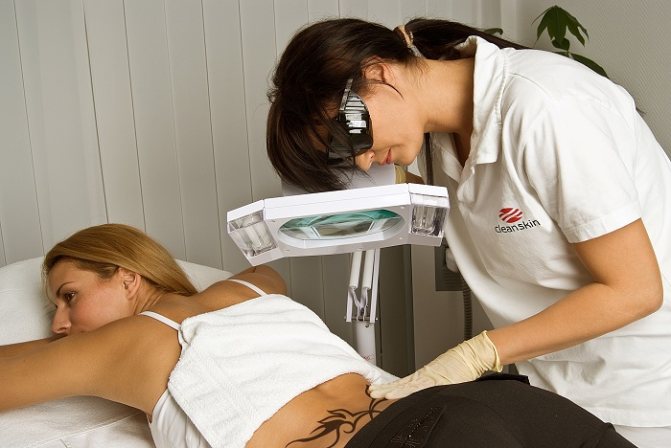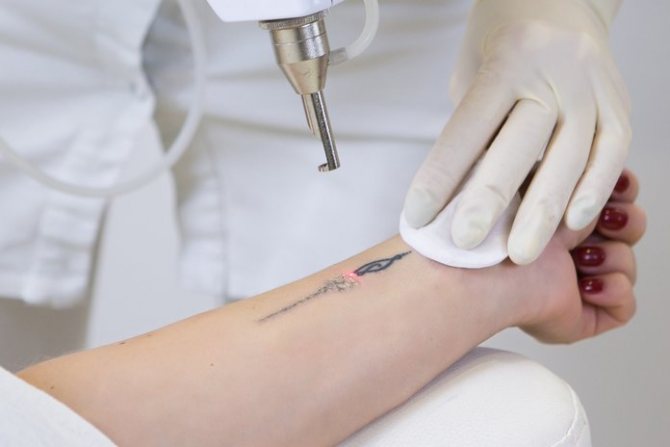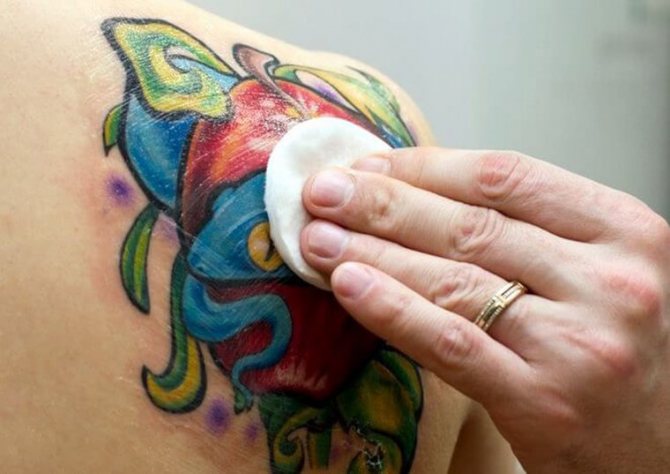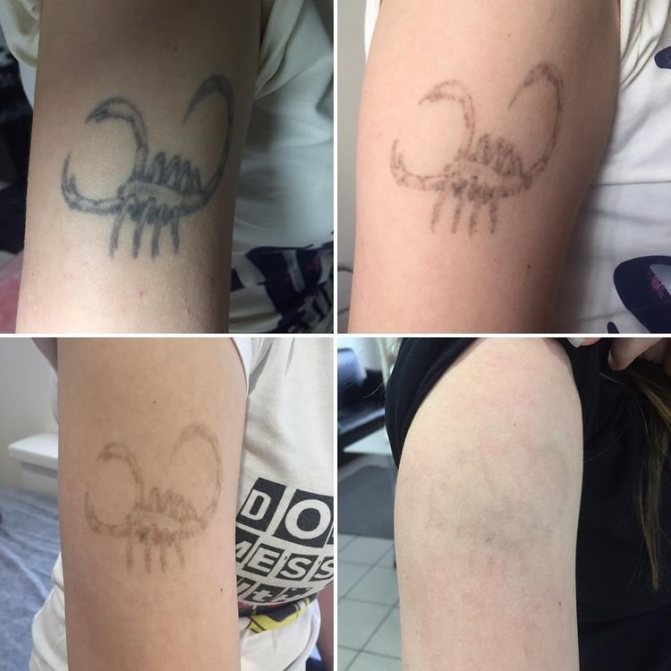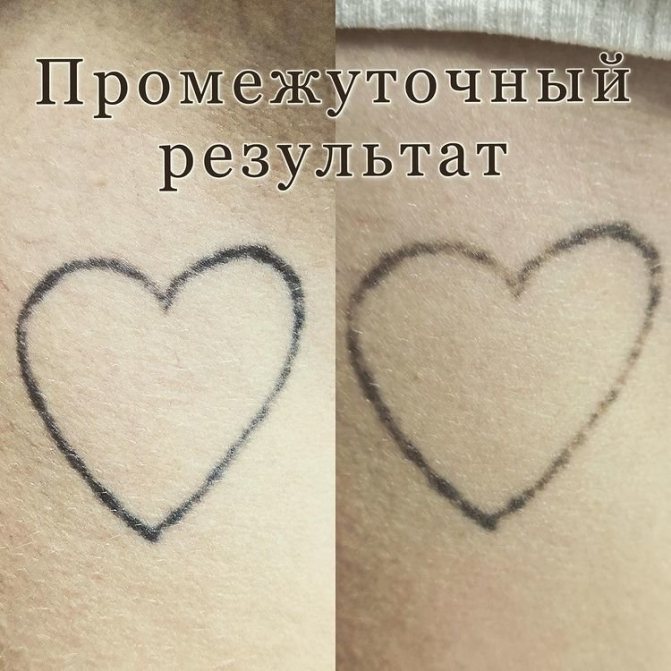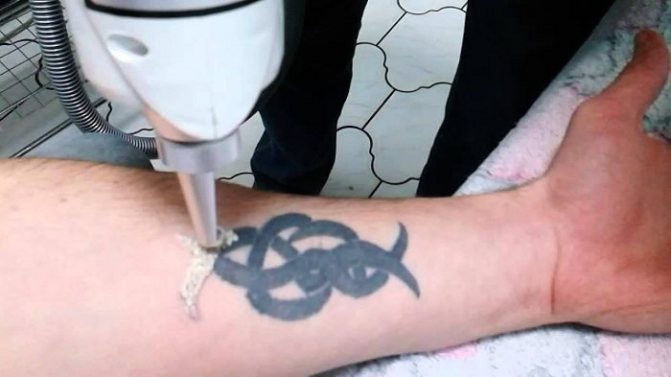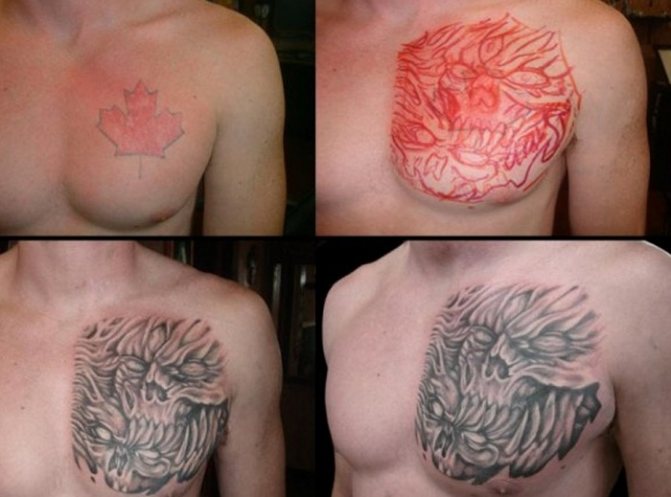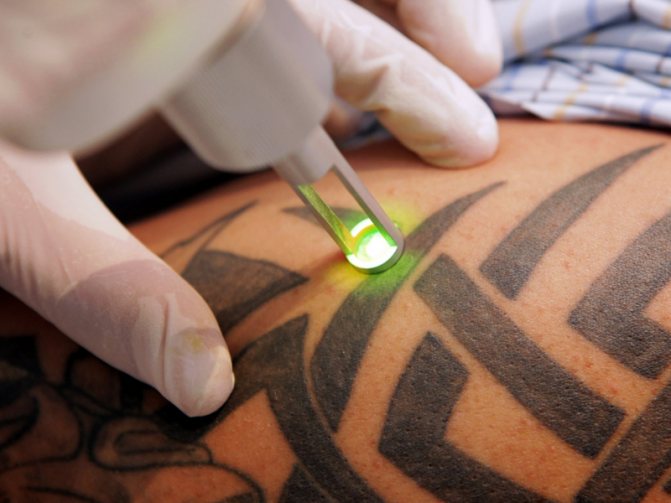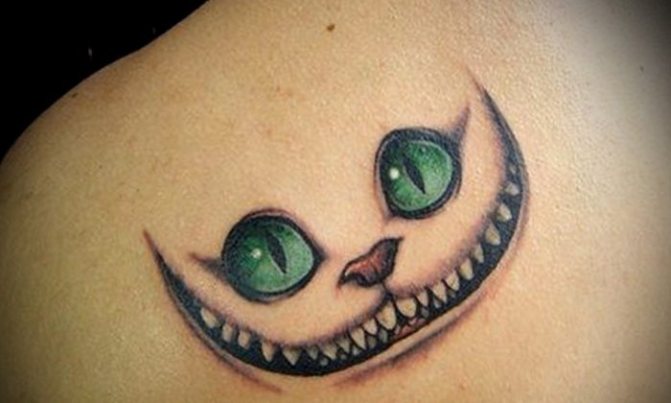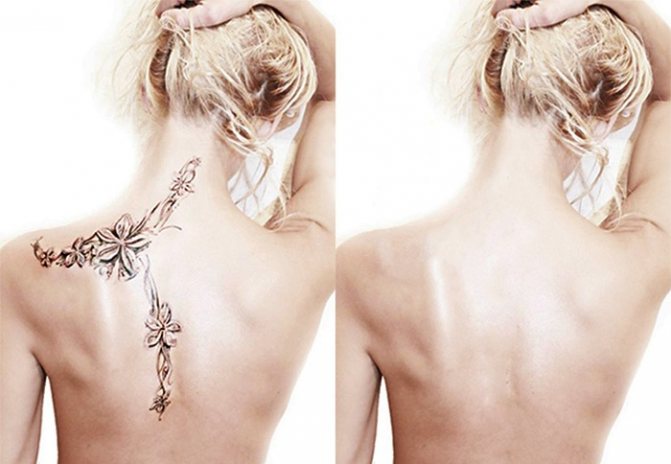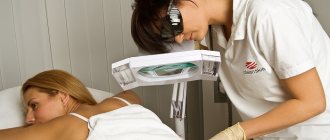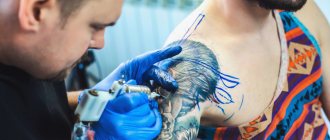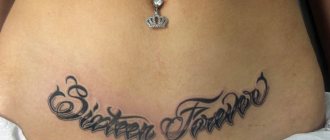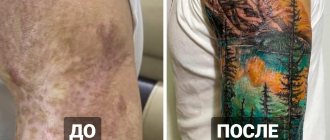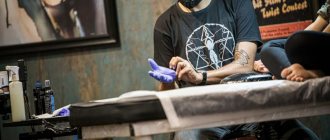Article on the topic
What will laser cosmetology fix?
"Don't ruin your body!" - said your mother, but you, in spite of the bans, still made a wonderful tattoo - a flower on your shoulder. Years later, the picture faded and blurred, and you became an office lady, unable to wear a top with short sleeves on a hot day. And now, looking at the once beautiful picture, you increasingly catch yourself thinking, "Why didn't I listen to my mom then?" Fortunately, it can be fixed.
You're lucky you live in the 21st century: you have cell phones, digital television, air travel that can take you from the stuffy city to the balmy sea in a few hours, and laser tattoo removal. It's the only way to date to get rid of an annoying or unfortunate image. But keep in mind, in order for the "Goodbye, Tattoo!" operation to go well, you'll have to choose the right salon. Otherwise, you run the risk of paying money and still remain with a scar on his shoulder or with a barely visible, but still distinguishable tattoo.
Explosion under the skin
Laser tattoo removal has been practiced since the 1960s, but the machines of the past produced beams that "burned out" the paint, but left behind bulging scars and scars. That all changed in 2004. That's when a new machine was created in the United States, working with the latest generation laser - the neodymium laser. It differs from its predecessors in the highest speed: it reaches the target in 7 billionths of a second! During this time the beam passes through the skin without having time to traumatize it, but at the same time it destroys the tattoo, or rather it affects the ink: some of it instantly lightens and the rest of it breaks down into microparticles, which are easily eliminated from the body naturally. Essentially, you have a little explosion under your skin. It sounds scary, but in fact the procedure, while not painless, is quite tolerable. It must be said that removing a tattoo is more unpleasant than applying one. Do not rush to panic: the picture master you prick at least an hour and a half, and will only take a couple of seconds. In addition, for particularly sensitive young ladies, there is anesthesia, however, experts do not recommend resorting to it without an absolute need: anesthesia slightly worsens the result.
Contraindications to tattoo removal
Unfortunately, the list of contraindications is huge:
- Skin diseases.
- Injuries to the tattoo site.
- Predisposition to keloid scars.
- Diseases of the cardiovascular system.
- Epilepsy.
- Fresh tanning.
- Diseases from the sphere of oncology.
- Pregnancy, lactation period.
- Diabetes mellitus in the decompensation phase.
- Blood diseases.
- Infectious diseases.
- Taking medications that are photosensitizers.
- Thrombosis, varicose veins in the tattoo area.
- Also, tattoos are not removed until the person is 18 years old.
- Presence of "golden threads".
If there is no opportunity to remove a tattoo due to contraindications, do not rush to get upset!
There are many methods of masking the unwanted drawing on the skin:
- With the help of conventional cosmetics.
- With the help of special cosmetics for tattoos.
- Auto-tanning.
You should not use methods of masking a tattoo only if it is still fresh. Apply makeup or self-tanner to the tattoo site only after it has completely healed.
The worse the paint, the faster
Do not think that after the first session you will get rid of the tattoo. In order to get rid of the tattoo you will need from three to five sessions at an interval of thirty days (each session costs approximately 3500 rubles). The number of sessions the artist prescribes to you depends on the paint driven under the skin. If you did a tattoo in a good salon, prepare yourself for a long date with a laser. Your boyfriend, who tattooed himself a tiger in artisanal conditions with ink, is luckier in this case. It's much easier and quicker to remove than professional ink. The color of your drawing is also important: black and blue paint is the easiest to remove, red and orange are the worst, and green is almost impossible to remove completely. Take note of this in the future and next time you're getting a tattoo, avoid emerald and swamp tones. Don't expect the final result to show immediately after the last "laser" session is over. Your skin needs at least six months to fully recover. After that, be sure that no one will guess that once your shoulder was decorated with a tattoo.
Iodine for tattoo removal
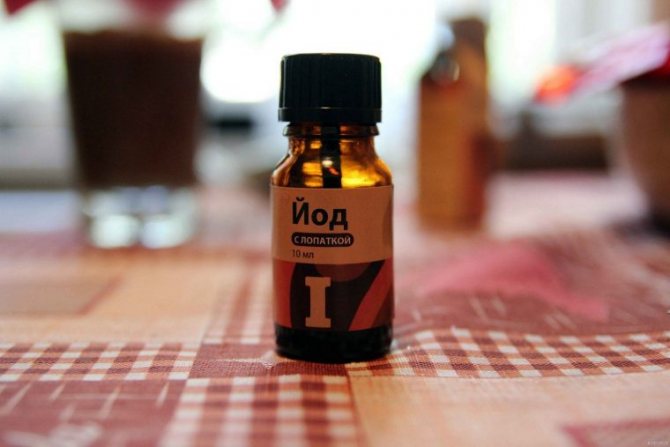
The first method declared on forums by comrades with unsuccessful tattoos is iodine. Indeed, this tool can remove the tattoo, however, it is necessary to understand: carrying out such activities at home, it is necessary Have patience and knowledge about the safe conduct of the procedure.
For scorching, otherwise you can't call it any other way, requires a 5% solution of iodine.. The iodine applied causes burns to the skin: this is what this method of tattoo removal is designed for. Gradually, with each new layer of the substance applied, the skin is traumatized and exfoliated. Repeated exposure of the permanent paint area results in its natural scraping away from the drawing area. To make the procedure as safe as possible and avoid scars, read the recommendations that the editorial MakeoverIdea kindly provided by the masters of tattooing Maxim and YanaWho work in Moscow:
- Perform manipulations to remove the ink from the dermis on a daily basis.
- Use a cotton swab to apply iodine to the skin: its area allows you to spot apply iodine to your skin with a cotton swab. Use a cotton swab to dot the design without touching the clean skin.
- Remove the tattoo only on a sober head. Otherwise there is a possibility of sloppy application of iodine, which cause a burn healthy skin.
- After the image has been treated with iodine, leave it in this form: it is strictly forbidden to cover, wrap or insulate it. This leads to an extensive burn that will later It will leave scars.
- Do not peel off the crusts from sores formed by iodine. This will get rid of the scars.
- Damaged skin may itch during the recovery process. This causes discomfort. Do not scratch the itchy spot: apply moisturizing gel or cream and bear it.
- As soon as the tattoo site is significantly deformed and you see a large wound with the secretion of blood. ...stop applying lubrication.... Allow the wound to heal on its own, without using additional methods of treatment.
Avoid "Chinese."
Remember that the result depends not only on the color of your tattoo, but also on the machine that will be used for removal. The one made in the U.S., costs about a hundred thousand dollars. Not surprisingly, many salons and medical centers do not buy expensive "Americans", and their Chinese counterparts, whose price does not exceed four thousand bucks. But, unfortunately, budget "Asians" cope with the task much worse - after their influence the tattoo is "readable" on the skin: even if it is barely visible, the ideal purity and smoothness in this case is out of the question. Therefore, before you get into the hands of the first encountered master, be sure to ask him to show you the documents on the device, where you can learn about the country of manufacturer.
Where and how to remove a tattoo by laser: photo before and after.
You can remove a tattoo by laser in any cosmetology clinic that provides such a service. The most modern method of destroying the coloring pigment under the skin is carried out with a neodymium laser. When using such equipment specialist must correctly select the wavelength of the laser and the type of its radiation. These parameters are selected based on the depth of the tattoo and its color. Modern equipment makes it possible to remove tattoos that lie at any depth and have paint of any saturation.
Depending on the size of the tattoo, the depth and the amount of paint used, the number of sessions can be determined. The more professional and vibrant the tattoo, the more sessions may be needed to remove it.
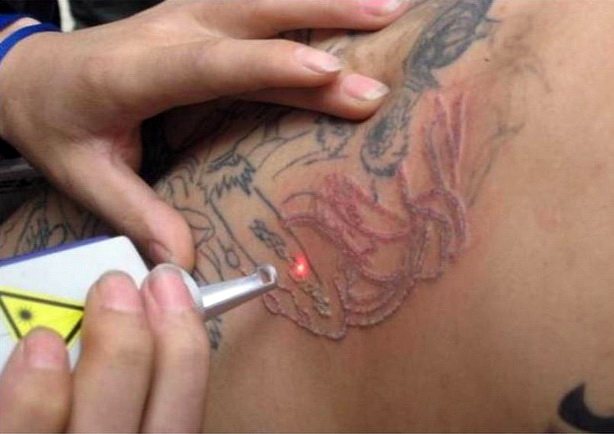

Laser removal
A neodymium laser can work on any color of paint:
| Neodymium laser beam. | The color of the pigment it affects |
| Infrared | Black, blue, green |
| Green | Yellow, red, and orange |
| Yellow | All bluish tones |
Contraindications to the use of such equipment can be skin lesions and the presence of inflammation in the area of the laser application.
After the laser treatment, the pattern will first become lighter and then darken. This indicates that the pigment is being destroyed. It will then be removed from under the skin naturally.
Opinion of the Specialist
Alexander Tsypkin, director of the tattoo salon "Dragon", a leading specialist in tattoo removal:
With the help of a laser machine you can remove not only a tattoo, but also unsuccessful permanent makeup. The technology will be the same as for tattoo removal. True, there is one nuance associated with the elimination of lip contour tattooing: burgundy and pink tones after the first procedure are likely to turn gray. This unavoidable effect that occurs after the interaction of paint with the laser, will pass in a couple of weeks. And don't forget that if you want to get the best results with tattooing or permanent makeup, you have to keep to the basic requirement - not to expose the treated laser area to the sun. Otherwise, the delicate unprotected skin could burn or be covered with pigment spots.
How to get rid of a fresh tattoo?
The fresher the tattoo, the easier it is to remove. But, to do this, you need to use professional techniques. The most effective method is, of course, the laser. Fresh paint is more easily destroyed by laser beams. Sometimes it is possible to lighten the area with a tattoo in one session. But, as a rule, after some time it is necessary to "fix" the success and conduct the repeated procedure.


In addition to the neodymium laser, popular today in cosmetic clinics, an alexandrite or ruby laser can be used for this purpose. The choice of equipment is based on the depth of the "occurrence" of the pattern. A shallow "tattoo" can be treated with a ruby laser. But, today, this technology is practically obsolete.
The alexandrite laser penetrates deeper, but is incapable of destroying the warm color paint.
There will be a scar!
Surgical method. The surgeon excises the skin at the location of the tattoo, and then sutures it. Because the necessary depth of cut depends on many factors and is very difficult to determine, there is always a risk of incomplete removal of the pattern. This method leaves scars. Coagulation. The coagulation method is the burnout of the tattoo by cold plasma (a special current discharge). After the procedure a scar remains, but not in the form of scars or dents, but repeating the shape of the removed picture. Dermabrasion. Dermabrasion is a mechanical method of removing the tattoo along with the top layer of skin, which is ground and shredded with a burr. A very bloody method, fraught with the largest and most unaesthetic scars and scars. Cryosurgical. In this case, the tattoo is frozen with liquid nitrogen. After some time after treatment, the skin is covered with a crust, which peels off within one to two weeks. Together with it "falls off" and tattoo, leaving behind the inevitable scar.
Video laser tattoo removal in Tallinn
In the video you can clearly see the brightening of the tattoo color directly under the laser beam. This effect is called "frost effect", freezing. This change is not the final result of removal, but the reaction of the pigment and the surrounding skin to the laser beam.
Immediately after the laser procedure we can see a slight swelling and elevation of the pigmented skin over the surrounding tissue. This effect is temporary and quickly passes without any discomfort. The technique of removing thin and extensive tattoos is not the same and is determined by the doctor.
After 5 weeks we see a significant change in the saturation of the tattoo in this patient. For a complete removal you will need 1-2 more procedures.
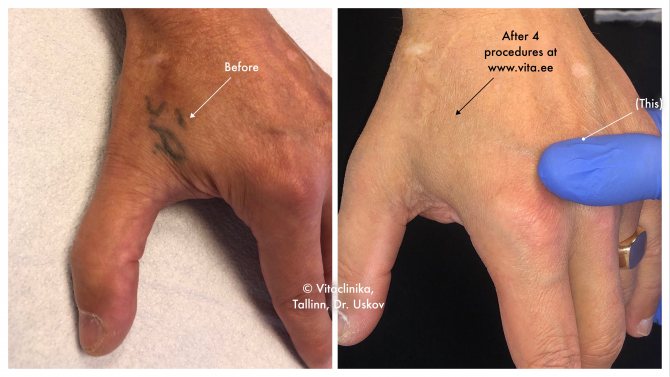

Photo - tattoo after 4 treatments
It would be a misconception to think that for absolutely all tattoos the same methods of removal should be applied. This is related both to the nature of the pigmentation and its color, depth of occurrence, dyes used, as well as gender, age, health features of the patient. Only experienced doctor during face to face consultation after examining the tattoo and collecting medical history can determine which method or a combination of methods is recommended for the best pigment removal for this particular patient.
- For removing tattoos and foreign pigment (for example, removing the lip tattoo or eyebrows tattoo) in Vitaclinic (Tallinn, Estonia) several techniques (or their combinations) are implemented: High-power Q-switched medical laser - the most often used in medical institutions for laser removal of tattoos. Powerful and very short nanopulses of different wavelengths allow to work with pigment of any color and almost any depth without damaging the skin.
- Medical IPL Lumenis M22 is a particularly gentle technique for removing natural pigmentation, freckles, age spots, lentigines, nevi located in particularly delicate areas.
- Microinjection techniques of pigmentation removal.
- Surgical removal of pigmentations with a cosmetic suture. The method is used in very rare cases.
In the vast majority of cases for the complete removal of tattoos and pigmentation enough 1 and 2 techniques, and 3 and 4 methods remain in the arsenal of Vitaclinic for rare and special cases.
Laser tattoo removal works on the principle of selective photothermolysis. As a result of exposure to a precise laser pulse of a specific power and wavelength, the pigment particles in the skin are briefly (a few nanoseconds) heated and as a result destroyed to a fine "dust". This dust is very small particles of pigment. Their small size allows the body's lymphatic cells to easily capture them and remove them from the skin with the natural lymph flow.
From this video it becomes clear why the intervals between laser tattoo removal procedures should be quite long.
In one procedure this way not the entire pigment is destroyed, but part of it. After about 1-2 months the procedure is repeated again. For the complete removal of tattoos is enough 6 or more procedures. For a significant brightening of the tattoo it is enough to 1-2 procedures.
Before the procedure, at the consultation the doctor explains all the technical details, gives the necessary recommendations, and answers the patient's questions. Tattoo removal at Vitaclinic is performed only in equipped medical premises. Before the procedure, the doctor examines the removal area. If necessary and indicated, anesthesia cream or injection anesthesia is used, but in the vast majority of cases additional anesthesia is not required. According to our patients "getting a tattoo is more painful than getting it removed". Vitaclinic uses a powerful Q-switched laser with a spot diameter of up to 10mm and pulse frequency of up to 10Hz to remove tattoos, allowing very quick and qualitative (no gaps) removal of virtually any size tattoo.
Video tattoo removal procedure with laser in Tallinn Videos of tattoo removal procedure with laser in Tallinn
The procedure is performed under an air-cold apparatus, which increases the comfort during the removal itself, as well as significantly reduces the risk of any negative complications. For this purpose, Vitaclinic is equipped with special equipment that works synchronously with the laser.On average, the procedure takes from 10 to 30 seconds.
After the procedure, cream is applied to the treated area and a sterile dressing is applied. As a result of using medical grade equipment, after tattoo removal procedure in Vitaclinic patients have no severe swelling, redness, blisters or inflammation of the skin.
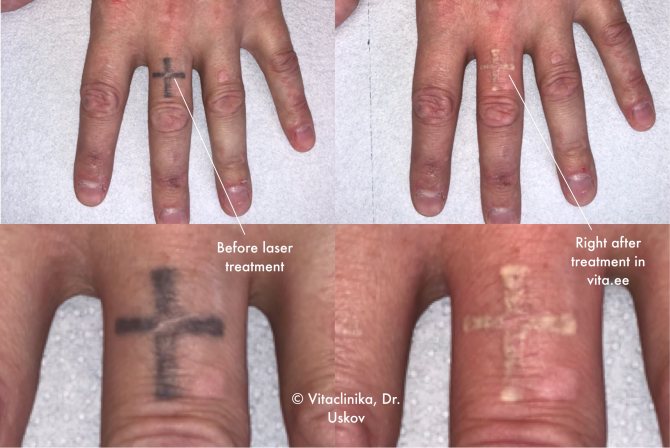

Photo - right after the procedure the tattoo is slightly lighter, then the original color comes back and the final result of the procedure is smoothly seen during 3 weeks.
What tattoos are usually removed
Today it is possible to remove a tattoo, made in any color scheme. In this case, the location of the figure on the body does not play a special role:
- Permanent makeup from the area of the lips, eyebrows, eyelids;
- The tattoo, located on the site of medical procedures, such as puncture;
- Tattoos whose contours are blurred or their design is deformed due to changes in shape;
- Colored and black and white professional tattoos;
- Tattoos performed at an amateur level.
Recovery after the procedure
Compliance with the recommendations during rehabilitation period after tattoo removal will be the key to avoid complications and traces of its removal. The site that has been lasered should be periodically treated with chlorhexidine, miramistine, D-panthenol in the first week, 2-3 times a day. You should not use alcohol or alcohol-containing antiseptics for this purpose. During this period, you should not visit the sauna, solarium or the beach, do sports or be outside for a long time. Only warm or cool showers are acceptable. If you need to go out in the daytime, the area where the tattoo was, should be treated with sunscreen or covered with clothing.
In the case of swelling or bruising, a cold compress or dry ice will help. If the skin begins to peel and itch, a moisturizing spray or cream will help to cope with these symptoms.
Warning! Since the pigment that is broken down by laser radiation is eliminated with the help of lymph, you should drink at least 1.5 to 2.5 liters of water per day during the recovery period
Removal without a scar
The main factor that stops those wishing to remove tattoos is the scar, which in most cases remains for life. Many people do not know how to remove tattoos without a scar. In order to avoid leaving marks on the body, it is necessary to use a few tips:
- It is necessary with great responsibility to choose a master. A qualified specialist with considerable experience in the removal of tattoos will be able to make such a procedure as qualitatively as possible, without consequences and with a minimal trace after the image is removed;
- The choice of venue is also of great importance. Good clinics and cosmetology offices are equipped with modern high quality equipment for removing tattoos without scars and marks;
- it is necessary to follow all the recommendations of qualified specialists on the care of the skin area where the tattoo was removed, because it is the recovery that determines whether the scar remains or not;
- After removal it is necessary to treat the affected skin with special antiseptics and wound healing means which promote fast tightening of the wound without scars. They are usually prescribed by specialists during the procedure;
- If a fresh trace remains, it is necessary to intensively use special ointments against scars, which will reduce it to "nothing".
In the end it is important to note that modern technology allows you to remove a tattoo, the main thing is to know where and how to remove a tattoo with minimal consequences. For this purpose it is better not to save money, and to address to the qualified experts in specialized establishments, where will be available all necessary, appropriate quality equipment for effective removal of the applied tattoos and permanent make-up.
| Go to directory of devices for tattoo removal |
